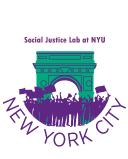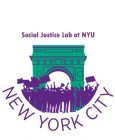Politics
How Unjust Systems Are Created and Upheld
Understanding the "two faces of oppression."
Posted November 17, 2021 Reviewed by Devon Frye
By Jeannine Alana Bertin
In his 1963 “Letter from a Birmingham Jail,” Martin Luther King Jr. wrote that, “I have almost reached the regrettable conclusion that the Negro's great stumbling block in his stride toward freedom is not the White Citizen's Councilor or the Ku Klux Klanner, but the white moderate, who is more devoted to ‘order’ than to justice: who prefers a negative peace which is the absence of tension to a positive peace which is the presence of justice.”
In King’s (not so celebrated) words, there exist two distinct kinds of people—two faces of oppression that are different and distinguishable, but that often complement each other in a terrifying manner. In the Ku Klux Klanner archetype are individuals who seek to dominate and subjugate others through overt violence, active engagement in state-sanctioned repression, and fervent advocacy of unjust policies. The “white moderate,” however, may be someone who is largely benevolent when interacting with members of subordinated groups, but beholden still to notions of social order that preserve the status quo and sustain their subordination. In cases of oppression throughout history, both forces are often seen working together.
To fully understand the social-psychological dynamics of oppression, then, we need an integration of theory that accounts for the relatively few social dominators who actively construct and defend the systems that subjugate others—such as, for example, what is referred to as the "prison-industrial complex"—as well as the far more numerous system-justifiers who in some way or another benefit from, endorse, and thus perpetuate those systems through their adherence to the status quo.
A system of oppression requires both: on one hand, to be created and established, such a system depends on actors who take specific actions and who are willing to exploit the state’s monopoly over social control and legitimized violence. Thus, high social dominators may, for example, become police officers, prison guards, prosecuting attorneys, and so on. But for a system of oppression to successfully sustain itself over time, participation from the masses is also required. It is the ordinary system-justifier who accepts and promotes its legitimacy through inaction as well as action.
What we may be seeking, then, is an integration of Sidanius and Pratto’s (2001) social dominance theory and Jost, Banaji, and Nosek’s (2004) system justification theory. Social dominance theory offers a multi-leveled analysis of: (1) individual differences in social dominance orientation (SDO), that is, the preference for group-based dominance and opposition to equality, (2) the ways in which hierarchical social orders are built and maintained through hierarchy-enhancing strategies, including the use of institutional power and legitimizing myths, and (3) how individual differences in SDO are associated with levels of engagement with hierarchy-enhancing strategies. For example, SDO has been found to predict occupational choices, such that people who decide to become police officers score higher in SDO than those who decide to become public defenders (Sidanius et al., 1994). And in the case of White police officers specifically, SDO scores have been found to predict the use of force to a significant degree (Swencionis et al., 2021).
On the other hand, system justification theory accounts for why other members of the population—who do not always gain directly (or even indirectly) from an unequal social system—often accept the legitimacy of hierarchical institutions and hierarchy-enhancing ideologies. Epistemic and existential motives lead most people to orient themselves psychologically toward the status quo. To reduce uncertainty and threat, and to preserve that which is familiar and known, people internalize and rationalize norms, values, and belief systems that serve to protect the status quo from criticism and threat.
Taken together, these two theories can be used to illustrate the two faces of oppression that work in conjunction to produce and perpetuate the circumstances of inequality and oppression that continue to afflict societies around the globe. Social dominance motives help to explain who emerges to create, sustain, and actively uphold oppressive systems. System justification explains why the rest of us allow them to do so. Cultural hegemony, a process of social influence whereby the social dominators win over the system justifiers, is what brings the two dynamics together and makes long-lasting forms of oppression possible.
References
Jost, J. T., Banaji, M. R., & Nosek, B. A. (2004). A decade of system justification theory: Accumulated evidence of conscious and unconscious bolstering of the status quo. Political Psychology, 25(6), 881-919.
Sidanius, J., & Pratto, F. (2001). Social dominance: An intergroup theory of social hierarchy and oppression. Cambridge University Press.
Sidanius, J., Liu, J. H., Shaw, J. S., & Pratto, F. (1994). Social dominance orientation, hierarchy attenuators and hierarchy enhancers: Social dominance theory and the criminal justice system. Journal of Applied Social Psychology, 24(4), 338-366.
Swencionis, J. K., Pouget, E. R., & Goff, P. A. (2021). Supporting social hierarchy is associated with White police officers’ use of force. Proceedings of the National Academy of Sciences, 118(18).


